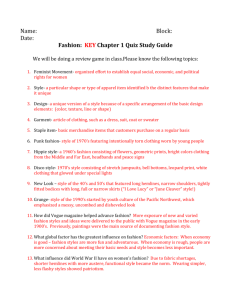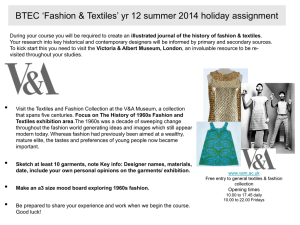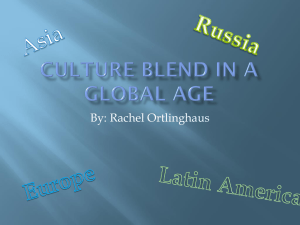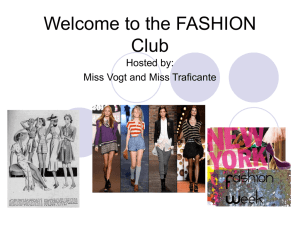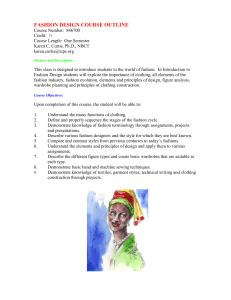Fashion Merchandising Unit 1 Test Study Guide
advertisement
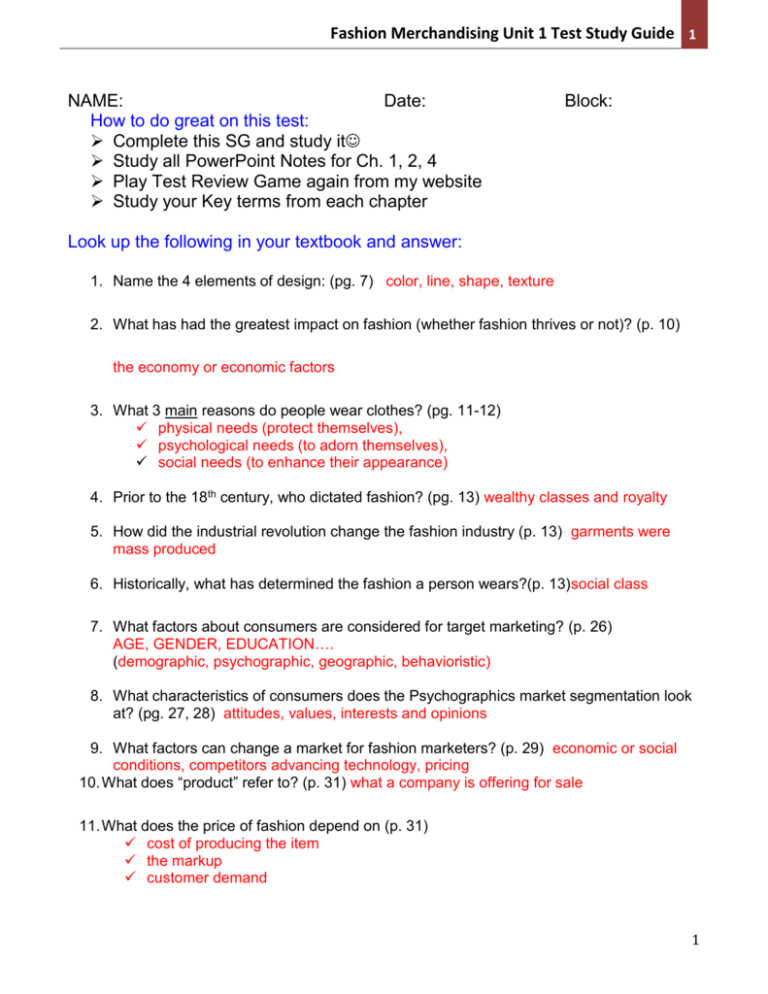
Fashion Merchandising Unit 1 Test Study Guide 1 NAME: Date: How to do great on this test: Complete this SG and study it Study all PowerPoint Notes for Ch. 1, 2, 4 Play Test Review Game again from my website Study your Key terms from each chapter Block: Look up the following in your textbook and answer: 1. Name the 4 elements of design: (pg. 7) color, line, shape, texture 2. What has had the greatest impact on fashion (whether fashion thrives or not)? (p. 10) the economy or economic factors 3. What 3 main reasons do people wear clothes? (pg. 11-12) physical needs (protect themselves), psychological needs (to adorn themselves), social needs (to enhance their appearance) 4. Prior to the 18th century, who dictated fashion? (pg. 13) wealthy classes and royalty 5. How did the industrial revolution change the fashion industry (p. 13) garments were mass produced 6. Historically, what has determined the fashion a person wears?(p. 13)social class 7. What factors about consumers are considered for target marketing? (p. 26) AGE, GENDER, EDUCATION…. (demographic, psychographic, geographic, behavioristic) 8. What characteristics of consumers does the Psychographics market segmentation look at? (pg. 27, 28) attitudes, values, interests and opinions 9. What factors can change a market for fashion marketers? (p. 29) economic or social conditions, competitors advancing technology, pricing 10. What does “product” refer to? (p. 31) what a company is offering for sale 11. What does the price of fashion depend on (p. 31) cost of producing the item the markup customer demand 1 12. Name the 3 marketing strategies to increase profits (p. 33) Increase the number of customers Increase the average transaction Increase the frequency of repurchase 13. Since the 1700’s, what city has remained the center of the fashion world?p.68) 14. London fashion focuses mainly on what fashion? (p. 70) ready-to-wear garments Paris high quality 15. Look up the Fashion Walk of Fame and describe: (p.74) a commemorative sidewalk on 7th Ave. in NYC celebrating the fashion designers who established NYC as a world fashion capital. 16. What city is the world’s largest wholesale merchandise resource? (p. 75) Dallas 17. What is Miami International Merchandise Mart known for?(p.76) moderately priced sportswear 18. Where do many fashion trends begin? (p. 80) on the streets 19. In what country did the Nehru jacket originate? (p. 81) India 20. Name some influences culture has had on fashion(p. 81) styles and henna tattoing from India, colorful fabrics from Africa, Japanese styles, western or cowboy styles, urban hiphop styles of African-American, punk, grunge 21. List the 4 components of the Marketing Mix: (p. 31) product, place, price, promotion 22. What is the primary center of US Fashion? (p. 69) New York City 23. What Country uses the term Haute Couture for high fashion? (p.68-69) (NOT Italian) France The following should be answered in short answer paragraph form 24. Name at least two ways the feminist movement has changed fashion from the 1920’s to the present. In the 1920’s, designers began to discard the long dresses and corsets for shorter skirts. Simple styles came out during wartime. In the 70’s designers began to design more pants for women entering the workforce 2 Fashion Merchandising Unit 1 Test Study Guide 3 25. Explain some of the ways in which culture and people “on the street” influence fashion. You should use 2 or 3 examples of street or culture influence/styles. Designers look at how people dress on the street. They are often influenced by the youth culture as in the Punk style of the 70’s and Grunge style of the 90’s. Also the 70-hip-hop street fashions exerted influence as of the late 1990’s. These styles moved out of African-American inner cities to other cities around the world, not just the US. Designers are influenced by their own culture and other’s culture. Examples: Fabrics of India, colors of Africa, Asian influence in dress styles, middle-eastern henna tattooing are all examples of cultural influences on fashion. Madonna wearing a kimono is an example of the Japanese culture influence. Know the meaning of these terms: (check your notes and key terms) Garment Grunge Feminist movement Style Punk Fashion Fashion Merchandising Demographics Marketing Target market Marketing mix Buying Center 3 Design Center Fashion weeks Culture Milan I believe you can do amazingly well on this test 4



